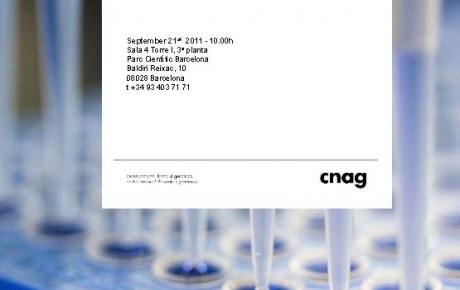September 21st 2011 - 10.00h
Sala 4 Torre I, 3a planta Parc Científic Barcelona
Baldiri Reixac, 10 08028 Barcelona
t +34 93 403 71 71

Oocyte development in Drosophila melanogaster is an interesting model of developmental processes and their timing, especially when localization of crucial components, formation of dorsal-ventral axis and segmentation is considered. Early development in fruit fly is has been previously studied by qualitative means thus highlighting many important pathways of mRNA and protein localization. Severe mutations usually get the most of attention, like mislocalization patterns leading to a failure to hatch for an embryo.I attempted to characterize developmental patterns during oogenesis as continuously varying traits. Such an approach is more precise in identification of subtle variation in development and is suitable for performing association study using isogenic population, which typically does not contain severe mutations for any particular trait.
Traits were scored from microscope images highlighting the crucial components of oocyte during various developmental stages. Oogenesis traits were further subjected to the genome wide association study. This study is among the first ones to exploit roughly 6 million different loci for Drosophila melanogaster. Such a density allows to gain all the benefits from using nearly isogenic lines.Association study yielded 5 candidate loci for 5 different traits. Most of the associated phenotypes characterize the distribution of DNA within nurse cell nuclei, apart from the cell compactness.
Nurse cells can serve as very good indicators of the developmental course and important oogenesis functions, because their volume and nuclei change considerably during various developmental stages and many important proteins and mRNAs are synthesized in nurse cells and only then transported into the oocyte. The majority of loci discovered either directly hit or are nearby important developmental genes. Most of the associated loci are located within introns and none belongs to a coding region. Thus the variants discovered might participate in regulating the level of gene expression.
This hypothesis was confirmed by the information from modENCODE indicating that most of the associated SNPs belong to a binding site and are marked as upstream or downstream.











